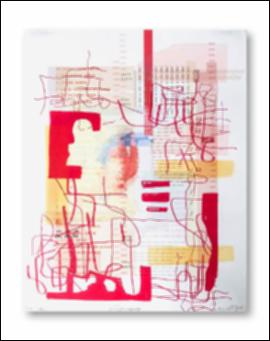| dc.description.abstract | Printing methods are continually evolving bringing forth new possibilities and ranging purposes for placing ink on the page. What originally propelled the human race into efficiently putting the written language into printed word for mass production was the original printing press. However, older methods utilized this idea of multiplication and a mechanical component through methods such as lithography, woodblock, intaglio and monotype. As technology has rapidly developed and presented us with the possibilities of those in the twenty-first century, the printing press has been replaced by the highly sophisticated, computerized form, the modern-day digital printer. As both a graphic designer and fine art printmaker, this creative project was an exploration of both printing methods and how they can be combined to not only exist amongst each other, but more importantly compliment each other. It was also an exploration of the relationship between the printmaking practice of "editions" and how the value in this idea of multiples drastically differs from the digital printers form of multiples in "copies." The process of this project worked in reverse historically, beginning with the most modern digital creating and printing methods. Utilizing the Adobe Software Creative Suite, images were first created using Photoshop brushes and Illustrator type tools on a Mac laptop computer. A total of eleven unique images were created. Four copies were digitally printed on a large-format Canon printer, but resulted in four slightly differing editions once they moved from a digital space to a fine art space. Throughout the refining process two images were removed from the final portfolio of images. A portfolio presentation box was also created with the thesis director at the conclusion of the making process. While the visuals of each image were different, their subject matter could either could be classified to depict aspects of the human figure or definitions and short statements regarding the human experience. While the subject matter of each image was carefully crafted, the purpose of this project did not root itself in understanding the iconography of each image, but more importantly the overall process in how each final image was created. After the digital printing process, the images were then transferred to the printmaking studio where the images were run through various presses utilizing the printmaking methods of polyester smart plate lithography and monotype. Every image was run through the press multiple times utilizing both of these methods to create an image that invites the viewer into an experience of seeing. The layered imagery, overlapping typography and multiple color incorporation created by both digital and traditional printing methods resulted in a set of images whose value came in not only the extensive layering, but how that layering was achieved. | |
